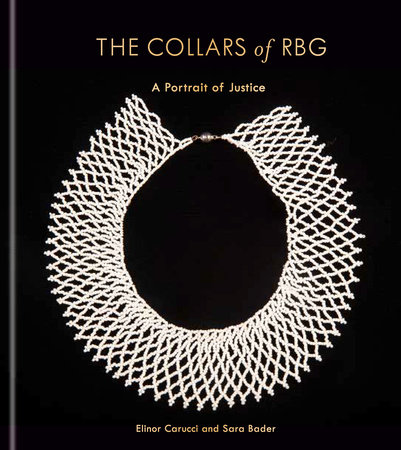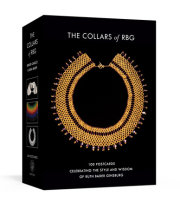The Assignment of a LifetimeOn September 18, 2020, we were visiting my aunt Esther in Kew Gardens, Queens, for Rosh Hashanah (השנה ראש) when we heard about the passing of Ruth Bader Ginsburg. My sixteen-year-old daughter, Emmanuelle—a queer, hard-core feminist and mountain of emotions—could not stop crying. Even though we knew that Justice Ginsburg was eighty-seven years old and battling pancreatic cancer, we were shocked. We thought she would live forever.
Emmanuelle cried on the F train home, all the way from Queens to our stop at West Twenty-Third Street in Chelsea. I tried to comfort her. We talked about how Justice Ginsburg touched so many aspects of our lives—as Jews, women, New Yorkers, feminists, and fighters for the issues we care about deeply: LGBTQ+ rights, gender and racial equality, and reproductive and parental rights. Justice Ginsburg’s words— “Women will have achieved true equality when men share with them the responsibility of bringing up the next generation”— were raised in discussions with my husband and children.
Justice Ginsburg was a daughter of immigrants, much like my own children; I moved to New York from Israel in 1995. My husband, also Israeli, joined me shortly after, and our son and daughter were born and raised in New York.
Justice Ginsburg’s achievements broke so many barriers. Her story held special significance for Jewish women like myself who dreamed of living a life that combined career success with motherhood—and, in Ginsburg’s case, also practicing the principle of tikkun olam (עולם תיקון(, the Hebrew term for repairing the world.
The week following her passing, I felt an urge to create work inspired by Justice Ginsburg, but I couldn’t find the right approach. Much of my personal photographic work has revolved around intimacy, family, motherhood, and women— how would I capture the legacy of a personal hero? Then I was approached by Katherine Pomerantz,
Time magazine’s photography director, about the possibility of photographing the justice’s collars for the magazine, and it felt like a prayer was being answered. This assignment was the equivalent of documenting a superhero’s costume, with all of the significance Justice Ginsburg held for me, my family, and millions of other Americans.
The assignment was still-life photography, not my specialty. Katherine believed as an artist, woman, mother, feminist, and Jew, I was the right person for this project, but I questioned whether I was the right photographer. In a conversation with Katherine, I shared the strong connection I felt to Justice Ginsburg’s legacy, and I listed every still-life photograph I’d ever created, from my grandmother’s Bukharan cooking to my mother’s beautiful red nails, and even images of my own uterus after a hysterectomy for a series about approaching midlife as a woman. After Katherine gave me the assignment, I ran to my daughter’s room and we burst into screams of joy.
As conversations about my fast-approaching trip to Washington, DC, progressed, I gathered my technical ideas about how best to photograph these meaningful objects. I talked with Katherine about creating full images of each collar and then zooming in on the details, as if taking a journey into each intricate design and the story it told. There was a lot to consider technically: camera angles, lenses, lighting, props, even how much time I would have to shoot each of the collars in the Supreme Court’s collection. I collaborated with prop stylist Josefine Cardoni to create semimatte velvet backgrounds for the shoot. Josefine stretched a rich black velvet that resembled the material used to line the drawers of jewelry boxes over two large wooden boards for me to take to Washington. I asked my husband, Eran, a fellow graduate of the photography program at Bezalel Academy of Arts and Design in Jerusalem, to help me on the shoot. The assignment was now a family affair.
It was important for me to do my own research before the shoot. I studied photographs and videos of Justice Ginsburg to familiarize myself with the varied materials and colors of the pieces. I learned that Justice Ginsburg initially started wearing these collars to represent her female identity and to distinguish herself from the male justices. Poring over the images and footage, I hoped to sense if she had a favorite or if certain collars held special significance.
I hardly slept the night before Eran and I drove to DC. There was so much to think about. I had six minutes to shoot each collar and needed the lighting, exposure, and composition to be perfect. There was no room for miscalculation. When we arrived at the Supreme Court and went through security—the sniffing dogs, the whole deal—my heart was pounding. This was the highest court in the land, where life-and-death decisions are made, and where the justice spent the last twenty-seven years of her professional life. As an immigrant, I felt a sense of pride; I came to America from another country, and now I was taking photographs in the Supreme Court.
We waited for the arrival of the collars in the formal and expansive East Conference Room. Tyler Lopez, the staff assistant at the Public Information Office, told us stories about Justice Ginsburg’s days with the court’s employees and her unlikely friendship with the late justice Antonin Scalia. In such divisive partisan times, their friendship was an inspiration. My arrival at the Supreme Court also coincided with the first day of conservative justice Amy Coney Barrett, Justice Ginsburg’s replacement. The significance of this timing was not lost on me.
A set of drawers was rolled into the room, accompanied by a delegation of staff, and the conference room was silent. We felt the presence of the collars. Each velvet-lined drawer held a small object with immense meaning. I felt like I was diving into the history of RBG’s tenure and every collar represented a story, a memory, a dissent, or a momentous opinion that changed the course of American history.
I got to work.
I carefully unwrapped the velvet boards Josefine had stretched for the shoot and set one up in my designated space on one side of the room. I opened two strobes: one with a softbox and a grid, to give off diffused light; the other with a beauty dish and a honeycomb grid, to give off more contrasted light that would highlight the collars’ colors and textures. I set up a small ladder that would allow me to photograph from above and prepared the lenses: a telephoto 70mm for the full images of the collars and a macro 100mm lens for detailed close-ups.
Eran and I positioned the lights, tested the exposure, and shot some tests using a handmade paper collar we had fashioned in the shape of Justice Ginsburg’s favorite piece, from South Africa. Eran has been assisting and supporting my photography since we first met in 1993, when we were both photography students. We have worked together on hundreds of photo shoots since—personal, editorial, commercial. Working together is like a dance: we are connected, attuned, synced. We worked quietly, nervously, and quickly. Focused, as the team we know how to be. Wearing white cotton gloves, we gently lifted each collar or jabot out of its drawer and placed it on the black velvet, spending six intimate minutes with each historic artifact before returning it to its drawer.
As I carefully set up each shot, I admired the beauty and style of each object. I had seen Justice Ginsburg wearing some of these collars in the news photographs and TV footage I’d studied, but appraising her personal treasures up close was an entirely different experience. I felt like a teenager visiting a museum for the first time to stand in front of my favorite Van Gogh or Chagall painting. I was transported to stages of Justice Ginsburg’s life: moments when she dissented, fought for what she believed in, shared personal stories with other justices, looked into the eyes of her beloved Marty, or held her children, Jane and James. I was granted extraordinary access into the heart and mind of one of the world’s most admired women, someone who had a maternal way of bringing about change, with patience and great respect for the opinions of the other side.
It felt right—to be there at the Supreme Court, photographing the collars in the place where Justice Ginsburg had worn them many times. To be working with my husband and not with a team of assistants. To use the same lights, camera, and lenses I have been using for years to document my children, husband, and parents, photographing the close-ups of my body and my mother’s body; close-ups of my grandmother’s and my mother’s jewelry, makeup, and Bukharan dishes.
The photographs of RBG’s collars are very different from my most known work, as collected in my books
Closer (2002),
Mother (2013), and
Midlife (2019), in which I draw from the deepest and most intimate parts of my life and the microcosm of family relationships. Justice Ginsburg is not a family member. I never met her in person. Yet this series of photographs is deeply personal. She was a symbol of justice and pride, my superhero. She represented my identity and connection to America. She represented the values I hope to pass on to my daughter and son, American Jews and the children of immigrants. I went into this shoot determined to do my finest still-life photography and left feeling that I did what I have always done with my camera: I created a portrait.
Copyright © 2023 by Elinor Carucci and Sara Bader. All rights reserved. No part of this excerpt may be reproduced or reprinted without permission in writing from the publisher.













